Pruning is an essential part of gardening, but knowing when to trim your trees and plants can be confusing. This guide provides a clear, easy-to-follow calendar for pruning various types of trees and plants. Whether you’re a beginner or a seasoned gardener, this article will help you understand the best times to prune, ensuring healthy growth and beautiful blooms throughout the year.
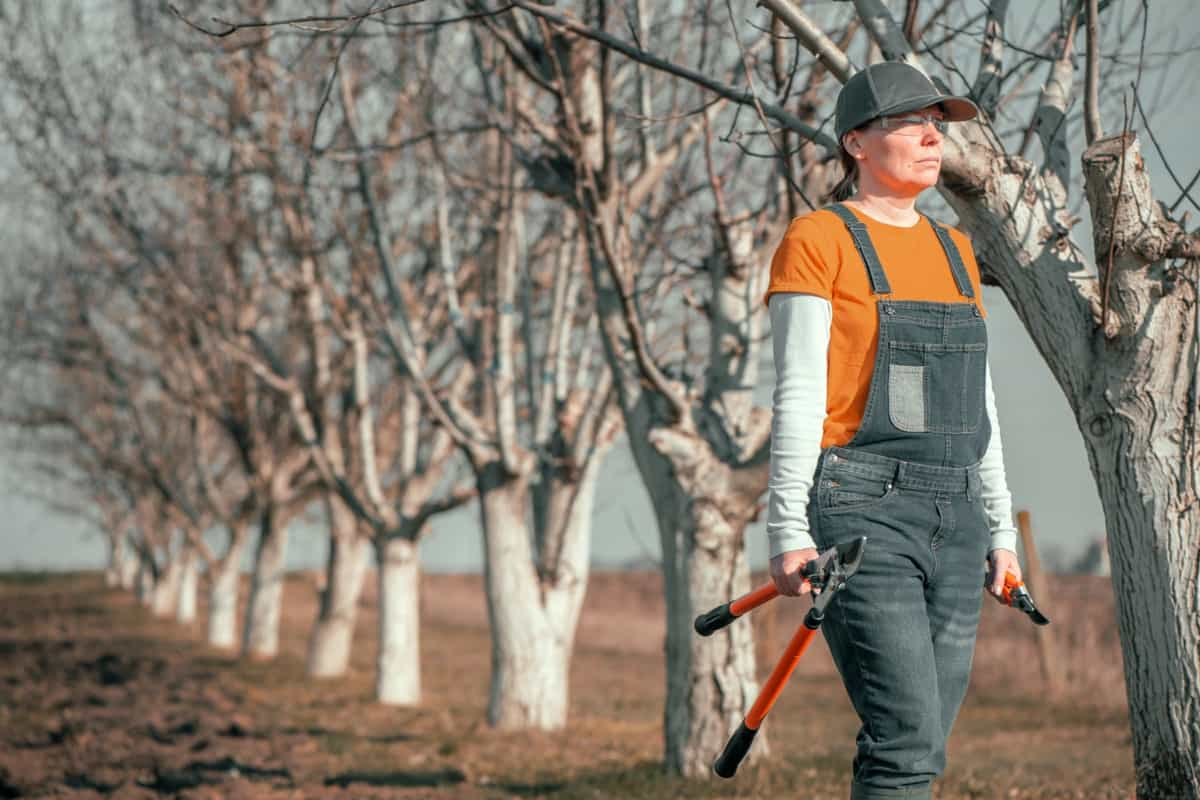
Understanding Pruning Basics
Pruning is the selective removal of certain plant parts, such as branches, buds, or roots, to improve its health, appearance, or productivity. Pruning can also help shape the plant, control its size, and prevent damage or disease. Different plants require varying pruning schedules and needs, influenced by factors such as their natural growth habits, flowering or fruiting cycle, age and vigor, response to pruning, and desired outcomes.
The right tools are needed to ensure effective and safe pruning. Common pruning tools include hand pruners for small branches of 1/2 inch in diameter, loppers for medium branches up to 1 1/2 inches in diameter, pruning saws for large branches over 1 1/2 inches in diameter, pole pruners for branches out of reach from ground, hedge shears for small-leaf hedges, and scissors for pinching or snipping off flowers or stems.
Pruning Techniques
Pruning cuts are two main types: heading and thinning. Heading cuts remove the terminal portion of a branch, promoting the growth of lateral buds near the cut. Thinning cuts remove an entire branch at its origin, reducing the plant’s density without changing its shape. These cuts improve light penetration and air circulation, remove dead or diseased wood, or open up the plant’s structure. To make a pruning cut, cut at a slight angle, avoid leaving stubs, make clean cuts, use the appropriate tool, and avoid pruning more than 25% of the plant’s foliage in one season.
Pruning Schedule for Trees
Deciduous Trees Pruning Schedule
Deciduous trees, which shed their leaves in winter, can be pruned anytime during their dormant season (late fall to early spring). However, certain exceptions apply, such as pruning birch, maple, and walnut in late summer or early fall to avoid sap loss, pruning cherry, crabapple, and dogwood after they finish blooming, and pruning fire blight-susceptible trees in winter.
| Tree | Pruning Time |
| Ash | Winter |
| Birch | Late summer to early fall |
| Cherry | After flowering |
| Crabapple | After flowering |
| Dogwood | After flowering |
| Elm | Winter |
| Maple | Late summer to early fall |
| Oak | Winter |
| Pear | Winter |
| Walnut | Late summer to early fall |
In case you missed it: Grape Vine Pruning, Defoliation, and Thinning for Great Yield
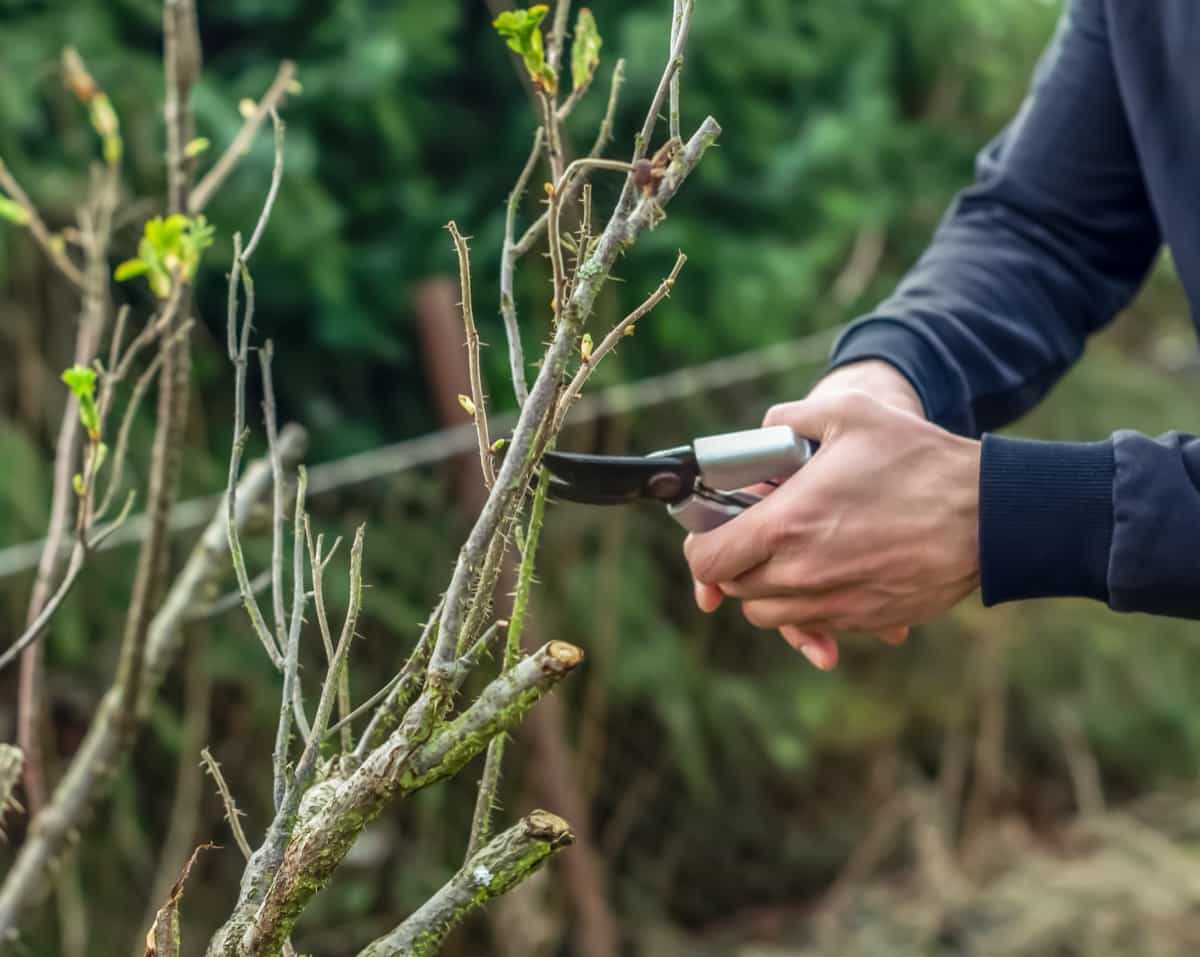
Evergreen Trees Pruning Schedule
Evergreen trees maintain their leaves year-round and can be pruned anytime except during their active growth period (spring to early summer). Pine trees pruned in late spring to early summer when their new candles are soft and pliable, while pruned and fir trees pruned in late winter to early spring before producing new buds, aiming for denser foliage. The following table shows a suggested pruning schedule for some common evergreen trees
| Tree | Pruning Time |
| Cedar | Anytime except spring to early summer |
| Cypress | Anytime except spring to early summer |
| Fir | Late winter to early spring |
| Hemlock | Anytime except spring to early summer |
| Pine | Late spring to early summer |
| Spruce | Late winter to early spring |
| Yew | Anytime except spring to early summer |
Flowering Trees Pruning Schedule
Flowering trees, which produce showy flowers in spring or summer, can be pruned to improve their bloom, shape, or health. The timing depends on the flowering season. Spring-flowering trees should be pruned after blooming to avoid removing buds while summer-flowering trees should be pruned in late winter to early spring to stimulate flower production. The following table shows a suggested pruning schedule for some common flowering trees:
| Tree | Pruning Time |
| Crape myrtle | Late winter to early spring |
| Goldenrain tree | Late winter to early spring |
| Magnolia | After flowering |
| Redbud | After flowering |
| Serviceberry | After flowering |
| Vitex | Late winter to early spring |
In case you missed it: How to Grow Japanese Maple Tree: Planting, Pruning, and Care
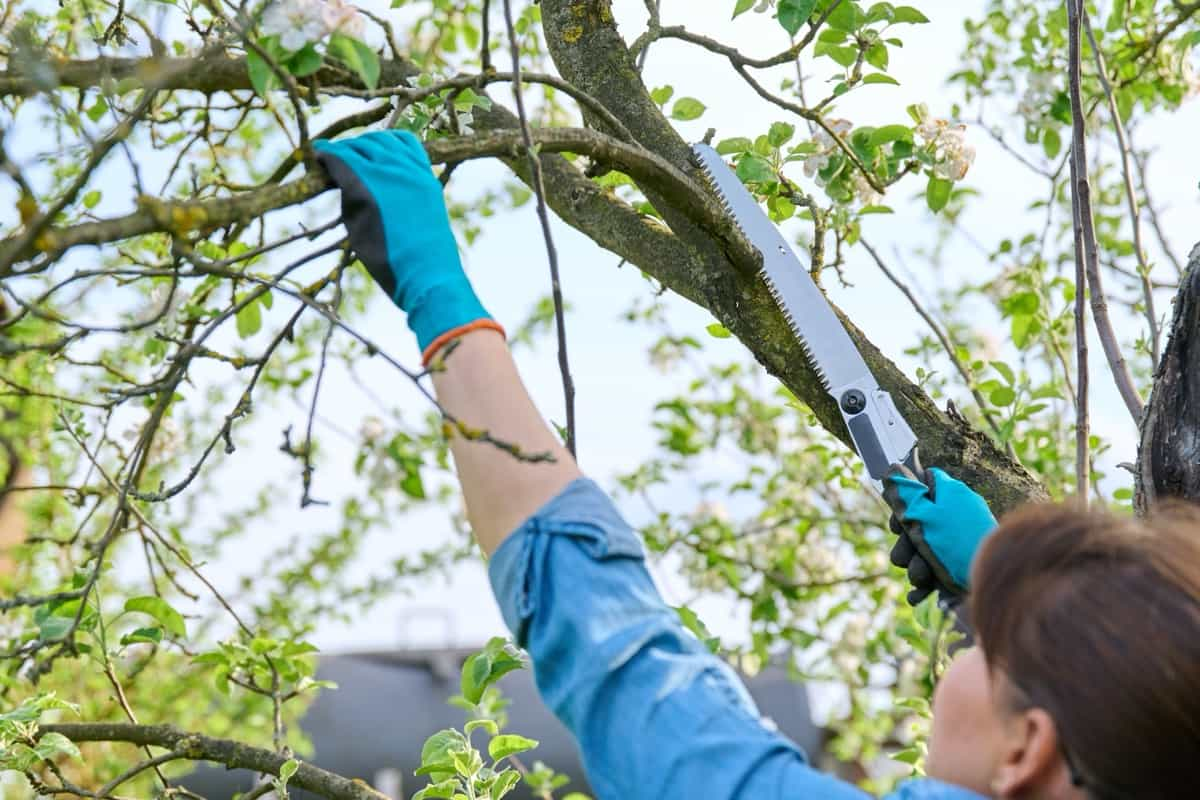
Fruit Trees Pruning Schedule
Fruit trees, producing edible fruits like apples, peaches, and plums, can be pruned to enhance their yield, quality, and health. The timing depends on the fruit type. Pome fruits should be pruned in late winter to early spring before bloom to remove damaged wood and improve light and air circulation. Stone fruits should be pruned in late winter to early spring after bloom to remove frost-damaged flowers and adjust fruit load. The following table shows a suggested pruning schedule for some common fruit trees
| Tree | Pruning Time |
| Apple | Late winter to early spring |
| Apricot | Late winter to early spring after flowering |
| Cherry | Late winter to early spring after flowering |
| Peach | Late winter to early spring after flowering |
| Pear | Late winter to early spring |
| Plum | Late winter to early spring after flowering |
| Quince | Late winter to early spring |
In case you missed it: A Guide to Understand the Pruning of Plants/Trees: Check How this Helps a Gardener/Farmer
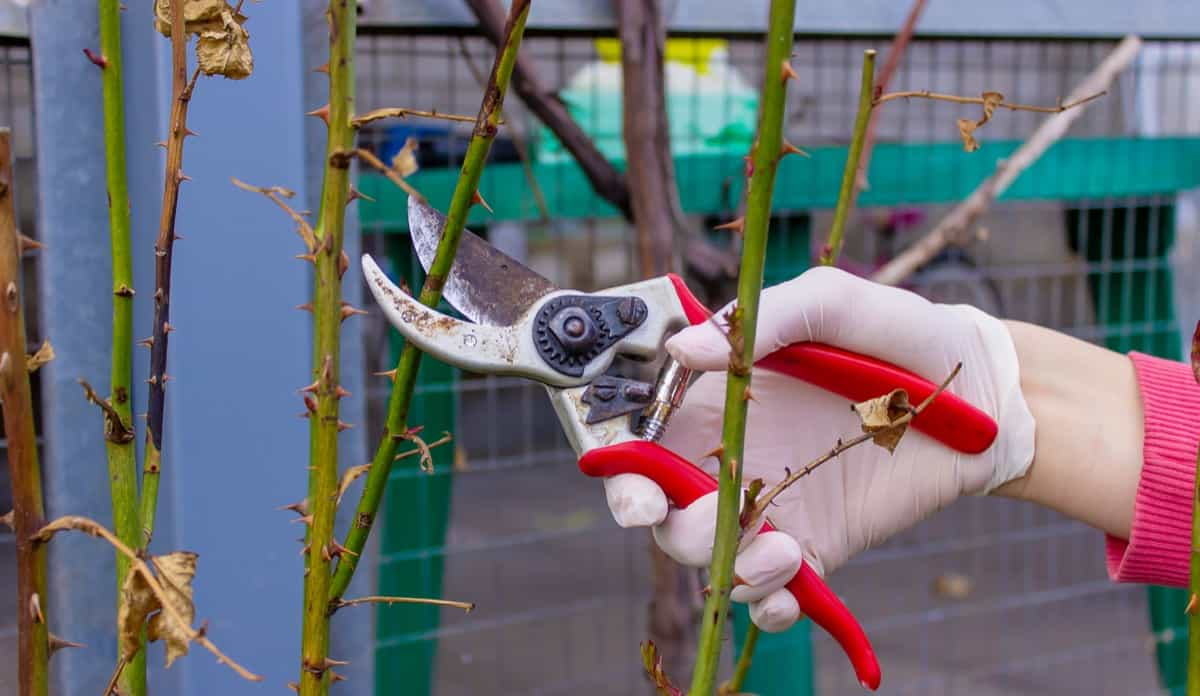
Ornamental Trees Pruning Schedule
Ornamental trees, grown for their aesthetic value, can be pruned to improve their beauty, shape, or health. The timing of pruning depends on the type of ornamental feature. Trees with colorful or interesting foliage should be pruned in late fall to winter, allowing for a better view of the branch structure.
Trees with attractive bark or stems pruned in late winter to early spring, removing old or dull wood and encouraging new growth. Trees with distinctive shapes or forms should be pruned throughout the year to maintain their desired appearance. However, avoid pruning during periods of stress or active growth, such as drought, heat, or cold. The following table shows a suggested pruning schedule for some common ornamental trees:
| Tree | Pruning Time |
| Birch | Late winter to early spring |
| Dogwood | Late winter to early spring |
| Japanese maple | Late fall to winter |
| Smoke tree | Late fall to winter |
| Weeping cherry | Throughout the year as needed |
| Willow | Late winter to early spring |
| Witch hazel | Late fall to winter |
Coniferous Trees Pruning Schedule
Coniferous trees are trees that have needle-like leaves and produce cones instead of flowers. They usually have a pyramidal shape and do not need much pruning except to remove dead, damaged, or diseased branches or to correct structural problems. The best time to prune coniferous trees late winter, early spring before the new growth appears. Pruning in the fall can cause foliage browning and increase the risk of fungal infections.
| Tree | Pruning Time |
| Pine | Late winter or early spring |
| Spruce | Late winter or early spring |
| Fir | Late winter or early spring |
| Cedar | Late winter or early spring |
| Juniper | Late winter or early spring |
| Cypress | Late winter or early spring |
In case you missed it: Bermuda Grass Fertilizer Schedule: When and How to Apply in Winter, Summer, and Spring
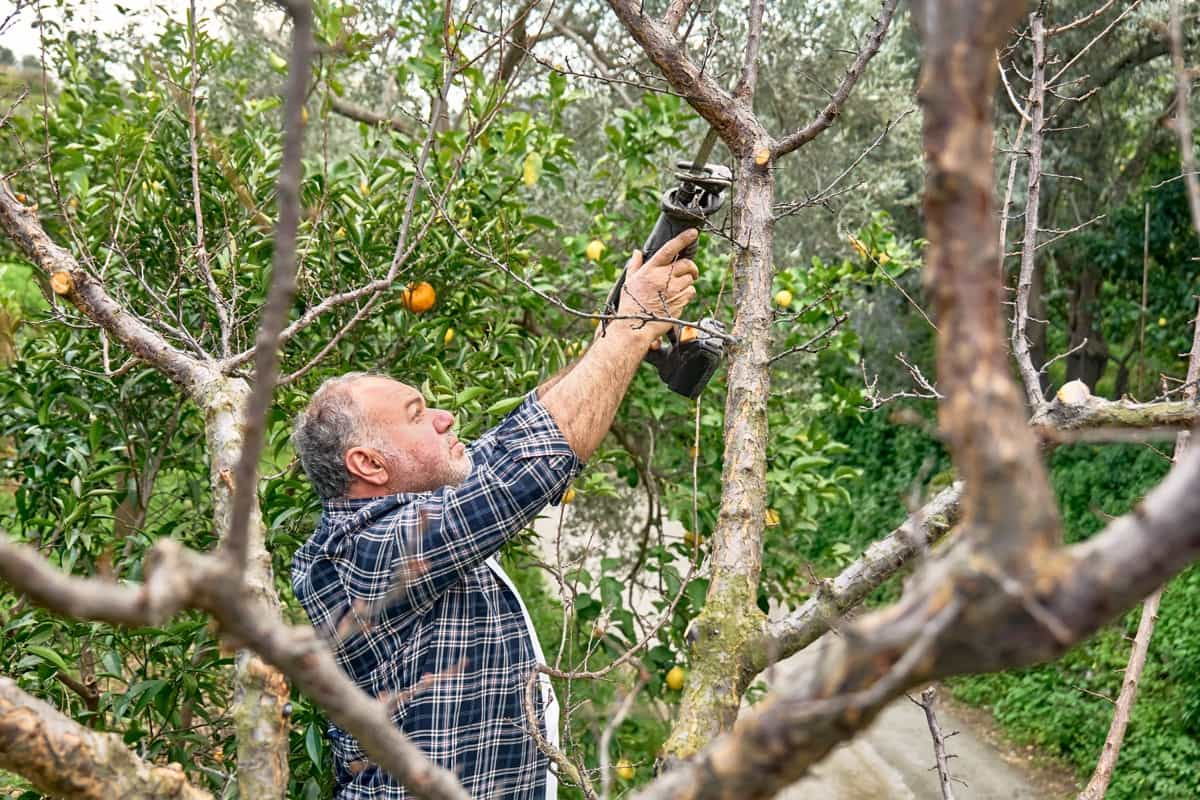
Shrubs and Hedges Pruning Schedule
Shrubs and hedges are woody plants that have multiple stems and can be grown for their flowers, foliage, fruits or as a boundary or screen. They are pruned to maintain their shape, size, health, and flowering potential. The best time to prune shrubs and hedges depends on their flowering season and growth habit.
| Shrub/Hedge | Pruning Time |
| Azalea | After flowering in late spring or early summer |
| Forsythia | After flowering in late spring or early summer |
| Lilac | After flowering in late spring or early summer |
| Rhododendron | After flowering in late spring or early summer |
| Boxwood | Spring (May) and mid-summer (July) |
| Privet | Spring (May) and mid-summer (July) |
Climbing Plants Pruning Schedule
Climbing plants are plants that grow vertically on supports such as trellises, fences, walls, or arbors. They can be pruned to control their size, shape, vigor, and flowering potential. The best time to prune climbing plants depends on their flowering season and growth habit.
| Climbing Plant | Pruning Time |
| Clematis | Depends on the flowering group |
| Wisteria | Twice a year: summer (July or August) and winter (January or February) |
| Climbing Rose | Late winter or early spring |
| Honeysuckle | Late winter or early spring |
In case you missed it: Chilli Fertilizer Schedule: How and When to Apply Organically, Inorganically for More Yields
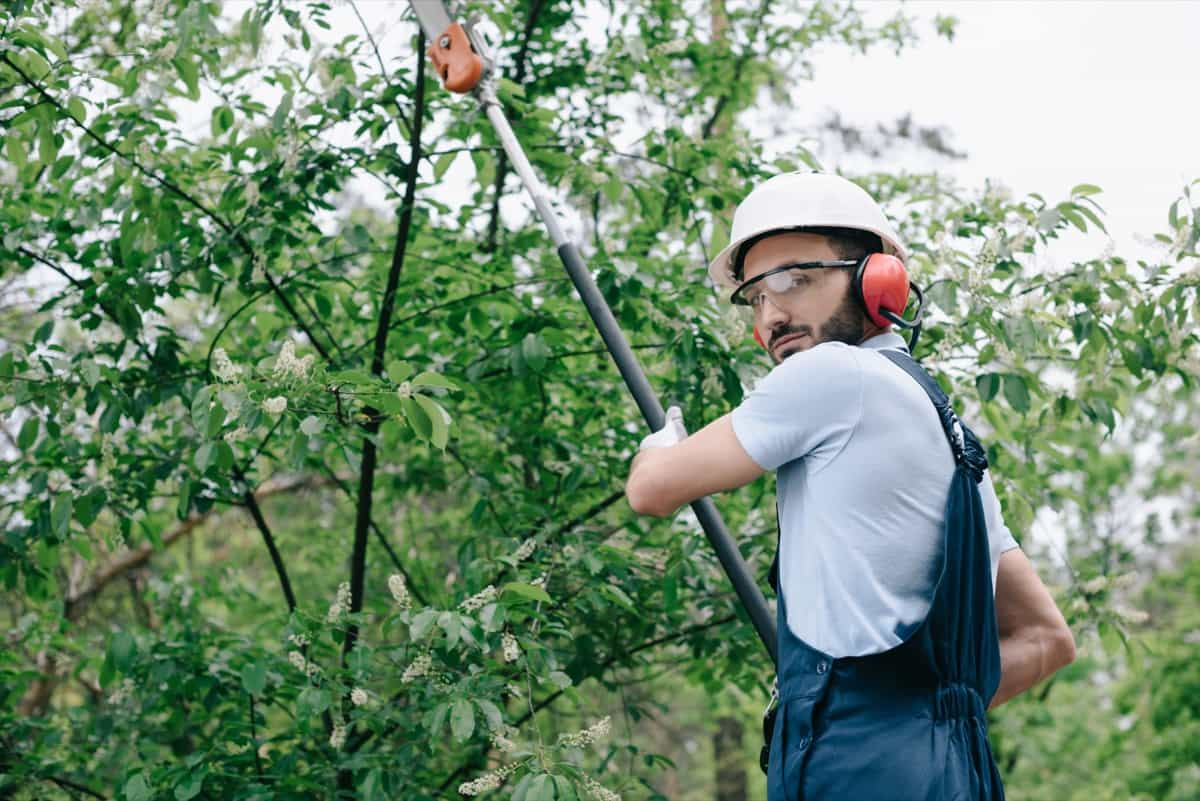
Considerations and General Tips for Pruning
To prune plants, use sharp, clean, and appropriate tools, disinfect them with alcohol or bleach before and after pruning to prevent disease spread. Make clean, smooth cuts at a 45° to 60° angle, close to bud or branch, without leaving stubs or tearing the bark. Avoid pruning by 1/3 of the plant, especially in the fall, stimulate new growth that may not harden before winter. Avoid pruning plants stressed by drought, pests, diseases, or environmental factors, and those with sap that can cause skin irritation or allergic reactions.
Conclusion
A well-planned pruning schedule is vital for the health and aesthetics of various trees and plants. By following specific seasonal guidelines, gardeners can ensure optimal growth, flowering, and overall health of their greenery. Remember, correct timing and technique in pruning make all the difference in a thriving garden.
- Types of Pesticides Used in Agriculture: A Beginner’s Guide
- Economical Aquaculture: A Guide to Low-Budget Fish Farming
- 15 Common Planting Errors That Can Doom Your Fruit Trees
- How to Make Houseplants Bushy: Effective Tips and Ideas
- Innovative Strategies for Boosting Coconut Pollination and Yield
- Pollination Strategies for Maximum Pumpkin Yield
- The Complete Guide to Chicken Fattening: Strategies for Maximum Growth
- Natural Solutions for Tulip Problems: 100% Effective Remedies for Leaf and Bulb-Related Issues
- Revolutionizing Citrus Preservation: Towards a Healthier, Greener Future
- Natural Solutions for Peony Leaf and Flower Problems: 100% Effective Remedies
- Maximizing Profits with Avocado Contract Farming in India: A Comprehensive Guide
- Natural Solutions for Hydrangea Problems: 100% Effective Remedies for Leaf and Flowers
- The Ultimate Guide to Choosing the Perfect Foliage Friend: Bringing Life Indoors
- From Sunlight to Sustainability: 15 Ways to Use Solar Technology in Agriculture
- The Ultimate Guide to Dong Tao Chicken: Exploring from History to Raising
- The Eco-Friendly Makeover: How to Convert Your Unused Swimming Pool into a Fish Pond
- Mastering the Art of Delaware Chicken Farming: Essentials for Healthy Backyard Flocks
- 20 Best Homemade Fertilizers for Money Plant: DIY Recipes and Application Methods
- How to Craft a Comprehensive Free-Range Chicken Farming Business Plan
- Brighten Your Flock: Raising Easter Egger Chickens for Beauty and Bounty
- How to Optimize Your Poultry Egg Farm Business Plan with These Strategies
- Subsidy for Spirulina Cultivation: How Indian Government Schemes Encouraging Spirulina Farmers
- Ultimate Guide to Raising Dominique Chickens: Breeding, Feeding, Egg-Production, and Care
- Mastering the Art of Raising Jersey Giant Chickens: Care, Feeding, and More
- Ultimate Guide to Raising Legbar Chickens: Breeding, Farming Practices, Diet, Egg-Production
- How to Raise Welsummer Chickens: A Comprehensive Guide for Beginners
- How to Protect Indoor Plants in Winter: A Comprehensive Guide
- Ultimate Guide to Grow Bag Gardening: Tips, Tricks, and Planting Ideas for Urban Gardeners
- Guide to Lotus Cultivation: How to Propagate, Plant, Grow, Care, Cost, and Profit
- Agriculture Drone Subsidy Scheme: Government Kisan Subsidy, License, and How to Apply Online
- Ultimate Guide to Raising Araucana Chickens: Breed Profile, Farming Economics, Diet, and Care
- Bringing Hydroponics to Classroom: Importance, Benefits of Learning for School Students
- Ultimate Guide to Raising Polish Chickens: Breed Profile, Farming Economics, Diet, and Care
- Ultimate Guide to Raising Australorp Chickens: Profile, Farming Economics, Egg Production, Diet, and Care
- Silkie Chicken Farming: Raising Practices, Varieties, Egg Production, Diet, and Care
- Sussex Chicken Farming: Raising Practices, Varieties, Egg Production, Diet and Care